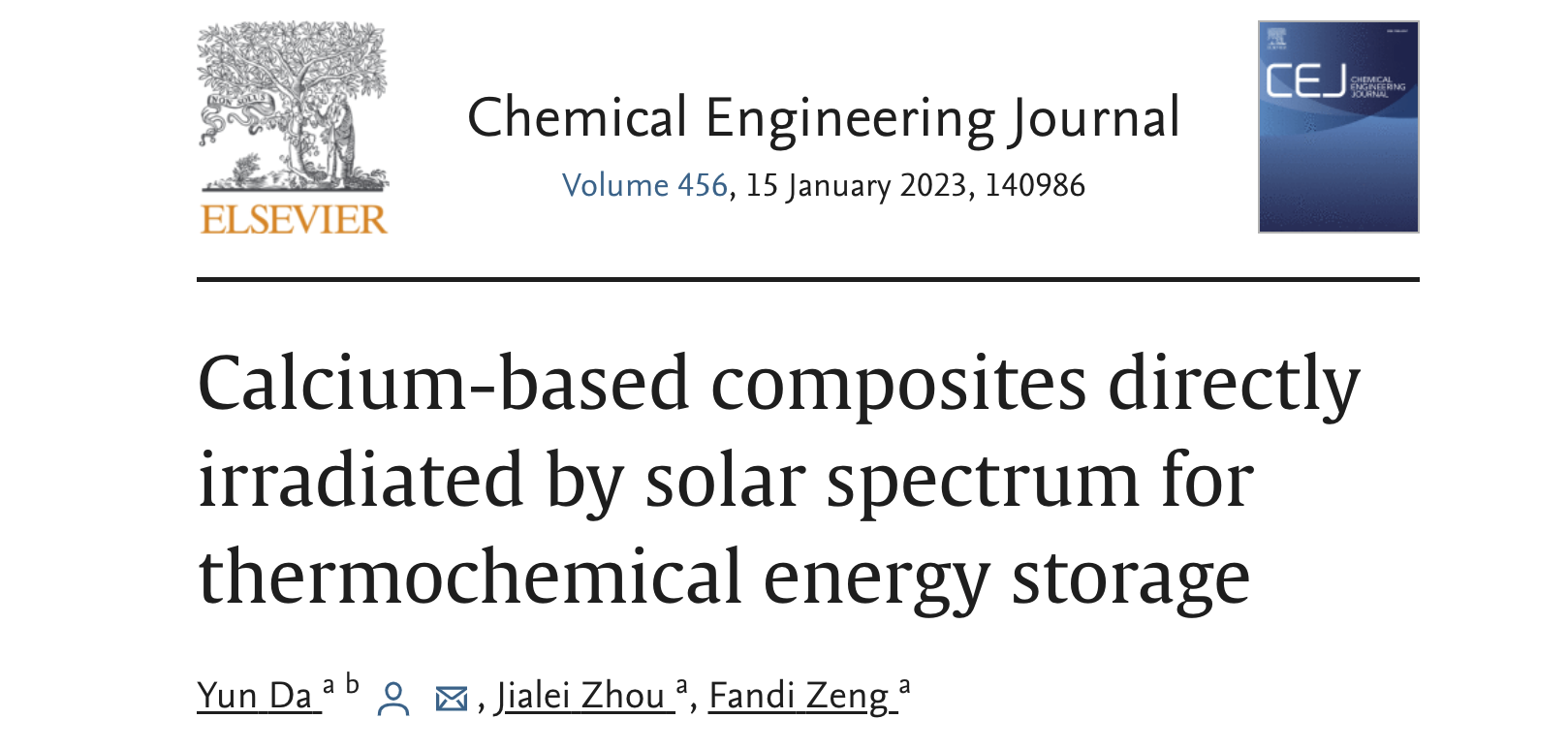
Abstract
The optical absorptance of calcium-based composites used in direct solar-driven calcium-looping thermochemical energy storage systems should be improved. Experimental data obtained by thermogravimetric analyzer (TGA) cannot adequately describe the realistic performance of such calcium-based composites. In this work, calcium-based composites filled in a fixed bed reactor were directly irradiated by concentrated sunlight to examine the performance of thermochemical energy storage under different light illumination conditions.
The effects of doping content and concentration ratio of sunlight on the cycling performance of the modified calcium-based composites were investigated under direct solar-driven conditions. The Cr/Mn co-doped CaCO3-based materials with a molar ratio of Ca: Cr: Mn = 100:4:8 could be efficiently operated under direct sunlight irradiation conditions because of a high optical absorption of 73.22 %, achieving gravimetric energy densities of 1090 and 818 kJ/kg in the 1st and 10th cycles, respectively. The cycling performance of the calcium-based composites under different light illumination conditions was compared with that using the TGA device.
By comparing the optimal performance in two operating modes, the cycling stability of the calcium-based composites attenuated faster in the solar-driven fixed bed reactor than in the TGA device, which was ascribed to the uneven temperature distribution in the solar-driven reactor. By preventing surface overheating or localized hot spots in a direct solar-driven reactor, cycling stability of the calcium-based composites can be enhanced. Based on this principle, we propose some improvement methods for ensuring uniform temperature distribution in CaCO3-based composites during the direct solar-driven calcination process.
Da, Y., Zhou, J., & Zeng, F. (2023). Calcium-based composites directly irradiated by solar spectrum for thermochemical energy storage. Chemical Engineering Journal, 456, 140986. https://doi.org/10.1016/j.cej.2022.140986
Read more at Chemical Engineering Journal














































